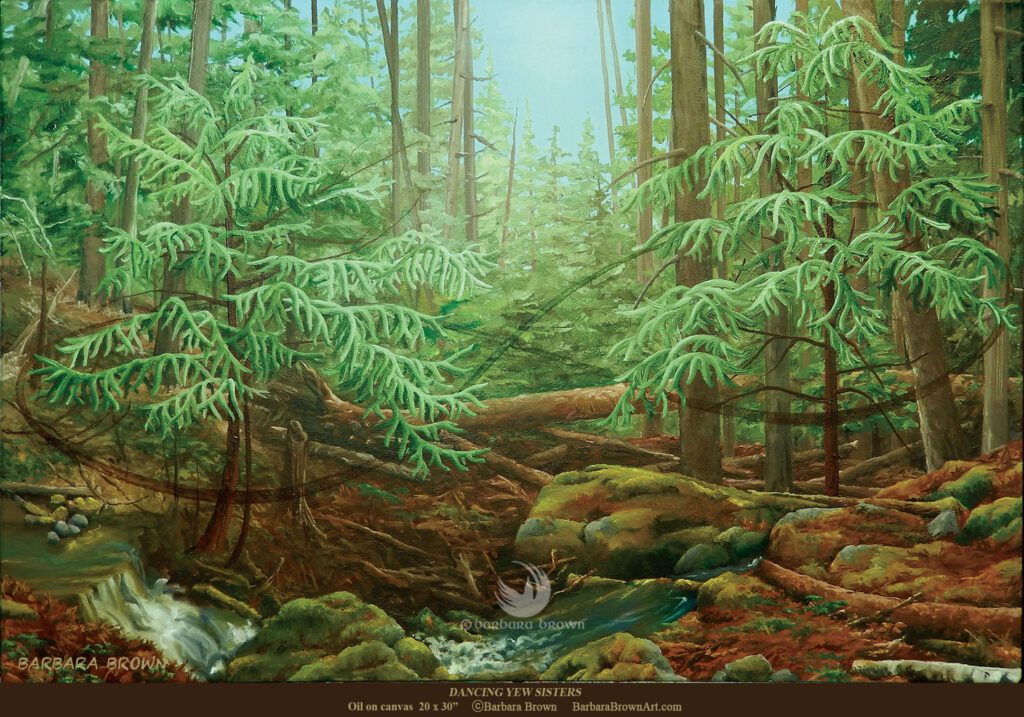
‘Dancing Yew Sisters’
Oil on Canvas 20″ X 30″
~
This image had been simmering away in the back of my mind for years. Every day I walk by these two young Yew trees growing so gracefully (for often-so-straggly Yews!) down by the creek. They are about the same age and I feel sister energy between them. I imagine them sharing a long slow dance throughout the span of their long lives together straddling this little creek in the forest, and I’ve always envisioned an ethereal infinity figure-8 symbol swirling between them, enfolding them, and informing their essence and their relationship.
~
Looking deeper into Yew tree lore I find my instincts to be unerring, as Yew is known to be the Tree of Eternity. Remarkably, the Yew is singular in its ability to grow forever, endlessly renewing itself. It is one of the oldest known tree species on Earth, growing here virtually unchanged for at least 250 million years. It can change its sex as it needs to to propagate itself, or it can be both female and male at the same time. It has the uncanny ability to grow new shoots from seemingly dead branches, and drooping branches can root as they touch the ground. The word ‘Yew’ means ‘eternity’ or ‘to be touched by eternity’ or even, in ancient Gaelic, simply ‘God’.
Sacred to humans since the beginning of time, ancient Yews are to be found in nearly every churchyard in NW Europe and the British Isles—that is if the church was founded on a pre-existing pagan holy site, as so many were. Long before Christianity, the Yews were present and revered at all the old sacred sites where people gathered to worship.
~
It’s the Western Yew (Taxus brevifolia) that grows in the forest here. It’s a conifer but instead of cones it produces red berry-like fruit. The bark is a smooth, deep rose-red with dark purple scales.
All parts of the tree are poisonous except for the flesh of the berries; although it is said that it was taken in ancient times for shamanic journeying. Today the potent breast cancer-fighting drug Taxol is derived from its bark.
The wood is extraordinarily dense, and indigenous peoples used it for tools, especially bows and staffs. I found two relatively straight fallen branches suitable for my walking sticks.
They are ancient ancestral wisdom keepers.
~~~
~Barbara Brown, from upcoming Volume II, SYLVAN REFLECTIONS, Wanderings, Paintings & Ponderings From the Forest
